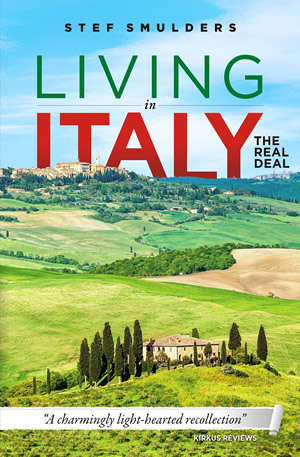
Milan: City Of churches, Art & Prayer
Milan is a city of churches as well. Being the see of church doctor and archbishop Saint Ambrose it could not have been otherwise. This guide presents about every church that has something worthwhile to be seen. The advantage of these are that they are free museums of art.
Although the Duomo cathedral is the quintessential Milan church, there are many more to visit. Do not forget to visit one or more of the beautiful abbeys that usually lie a bit further out of town, like the Certosa di Pavia , the abbey of Viboldone or the Certosa di Garegnano .
The daytrips to Pavia, Cremona, Vigevano and Como offer the opportunity to see even more memorable places of worship.
Our list of churches and abbeys (organized by district; click on the church name to open a panel with more info):
 Brera District
Brera District
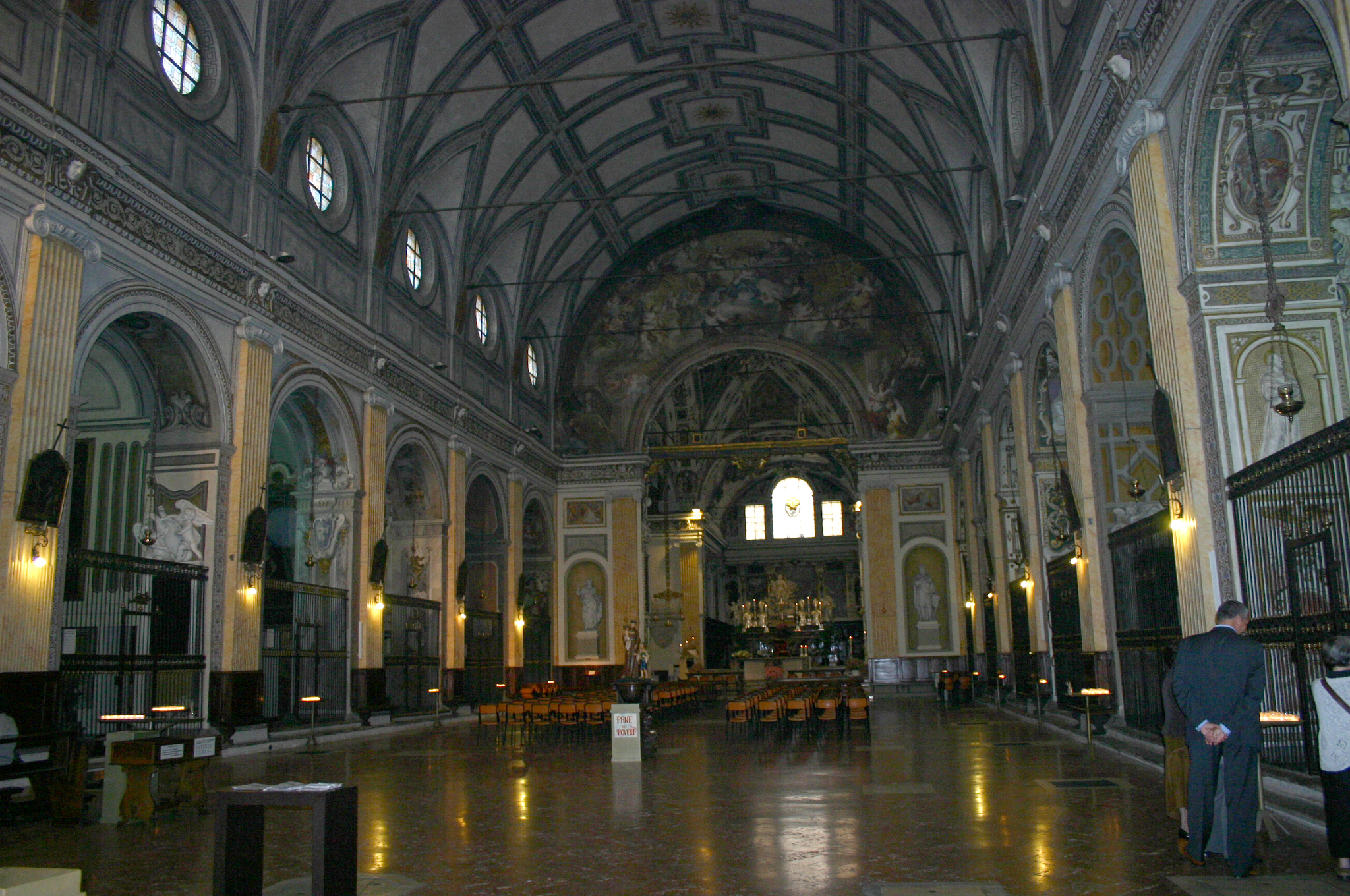
A Franciscan church and convent.
The church of Sant'Angelo is one of the few religious buildings that remained untouched by the 19th-century neo medieval restoration rage, still showing its original 16th century aspect. The convent in contrast is a new construction.
The church again presents an exibition of the most important Lombard painters: Ferrari, Campi, Morazzone, Procaccini and Peterzanno.
The decoration depicting a radiant sun with the monogram IHS is typical of the Franciscans.
For a vitual view of the pleasant little square in front of Sant'Angelo, see the 360cties website
Piazza Sant'Angelo 2, Milan
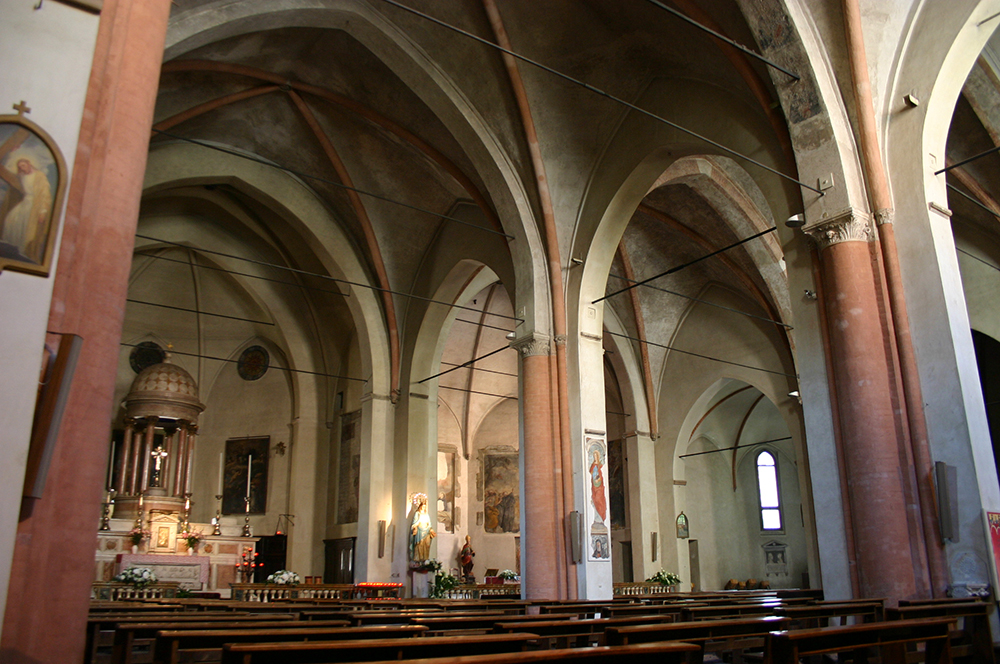
This romanesque church to the north of the Brera district, is the result of the joining of the factory of S. Nicola di Tolentino to the chapel of Garegnano. Inside there are several artworks to be admired:
- Christ beneath the winepress fresco of Bergognone
- a very precious gravestone of Giovanni Bossi, attributed to Bambaia
- the beautiful and lively series of baroque frescoes of the life of S. Nicola di Tolentino
From the adjacent convent part of the portico cloister and the library still remain Corso Garibaldi, 116
Opening:
Every day 7.30-12.30 and 15.30-19.30
The church of San Marco is part of the motherhouse of the order of St. Augustine. It contains artwork related to Augustinian subjects.
_-_Foto_G._Dall'Orto2.jpg)
- A fresco by the Fiammenghinis: Alexander IV instituting the Order of the Augustinians
- 16th century frescoes by Lomazzo that narrate the stories of Saint Peter and Saint Paul
- the peculiar Nativity scene made of paper
- The sarcophagus of the blessed Lanfranco Settala, including the statue of the deceased surrounded by angels and saints
- underneath the Settala tomb precious frescoes were found among which a crucifixion attributed to a 14th-century Lombard master
- the Martino Aliprandi sarcophagus with its dual representation of God's sacred divinity in the Heavens and incarnation on Earth
- a monochrome Madonna of the Leonardo school
- an Antegnati organ dating back to the 16th century is particularly noteworthy
This church is definitely worth the detour
Piazza San Marco 2, 20121 Milan
A 360 degrees view can be seen here
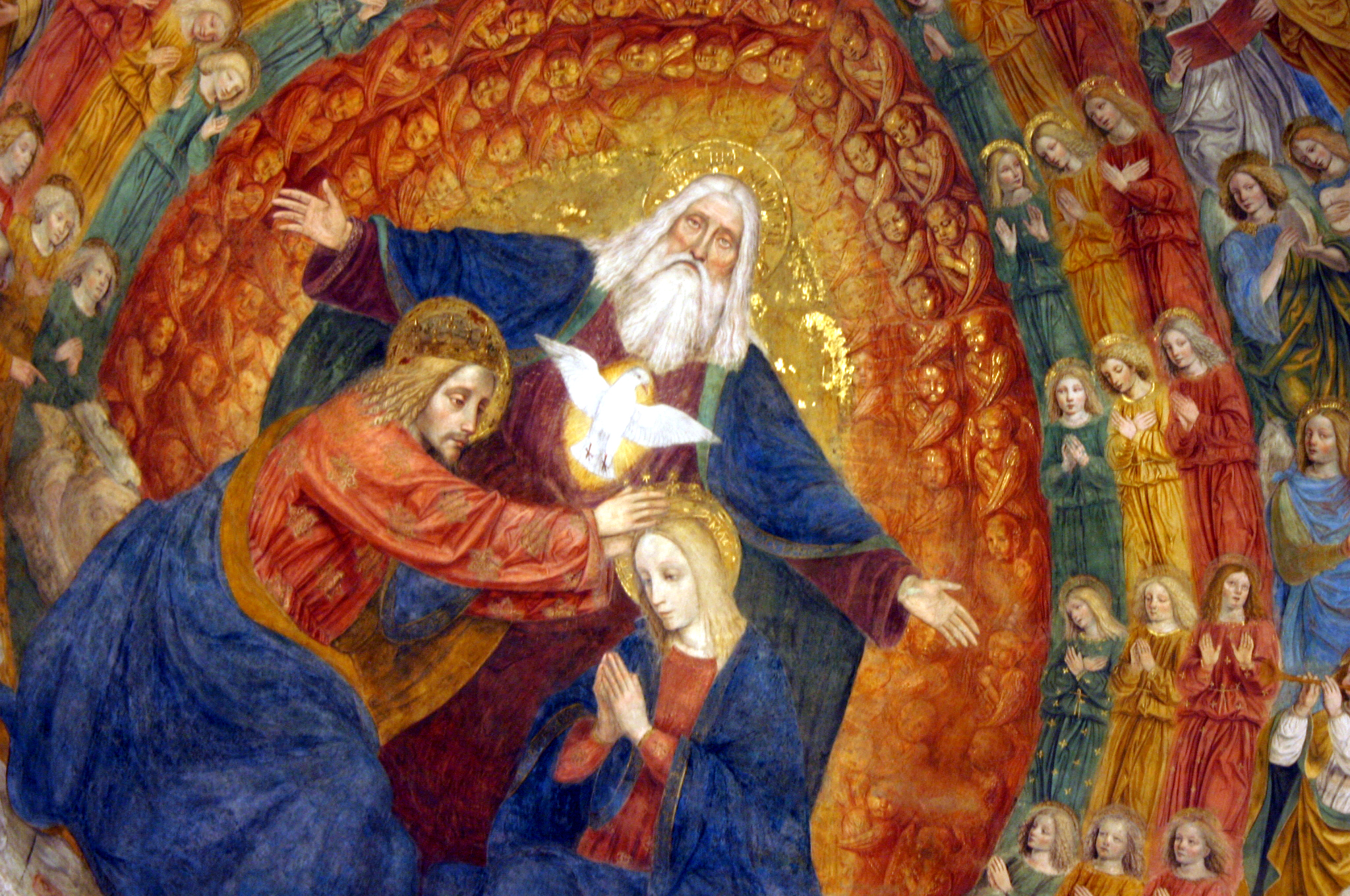
The San Simpliciano Basilica was built on the initiative of St. Ambrose, but reworkes quite extensively in later periods. It is close to Sempione Park and worth a visit mainly for the beautiful incoronation of Mary by Fossano in the apse
The church is associated with the memory of the battle of Legnano according to the legend, the bodies of the martyrs resting here flew as doves to the fields of Legnano, landing on the city's Caroccio, (a ceremonial war wagon) as a sign of the imminent victory against Frederick Barbarosso's army.
In 1927 stained-glass windows portraying episodes of the battle of Legnano were added.
Further notable artwork:
- Defeat of the Cammolesi by Varotari (II Padovanino)
- Saint portraits frescoed by Luini
- Marriage of the Virgin by Procaccini
You may also want to visit the former cloisters of San Simpliciano recently restored and now housing the North Italian Faculty of Theology. Worth seeing here are the frescoes on the vaults, the paintings in the faculty and the painted ceilings in the St. Paul's room.
Piazza San Simpliciano 7, 20121 Milan
 Centro Storico
Centro Storico
A little 17th century baroque gem
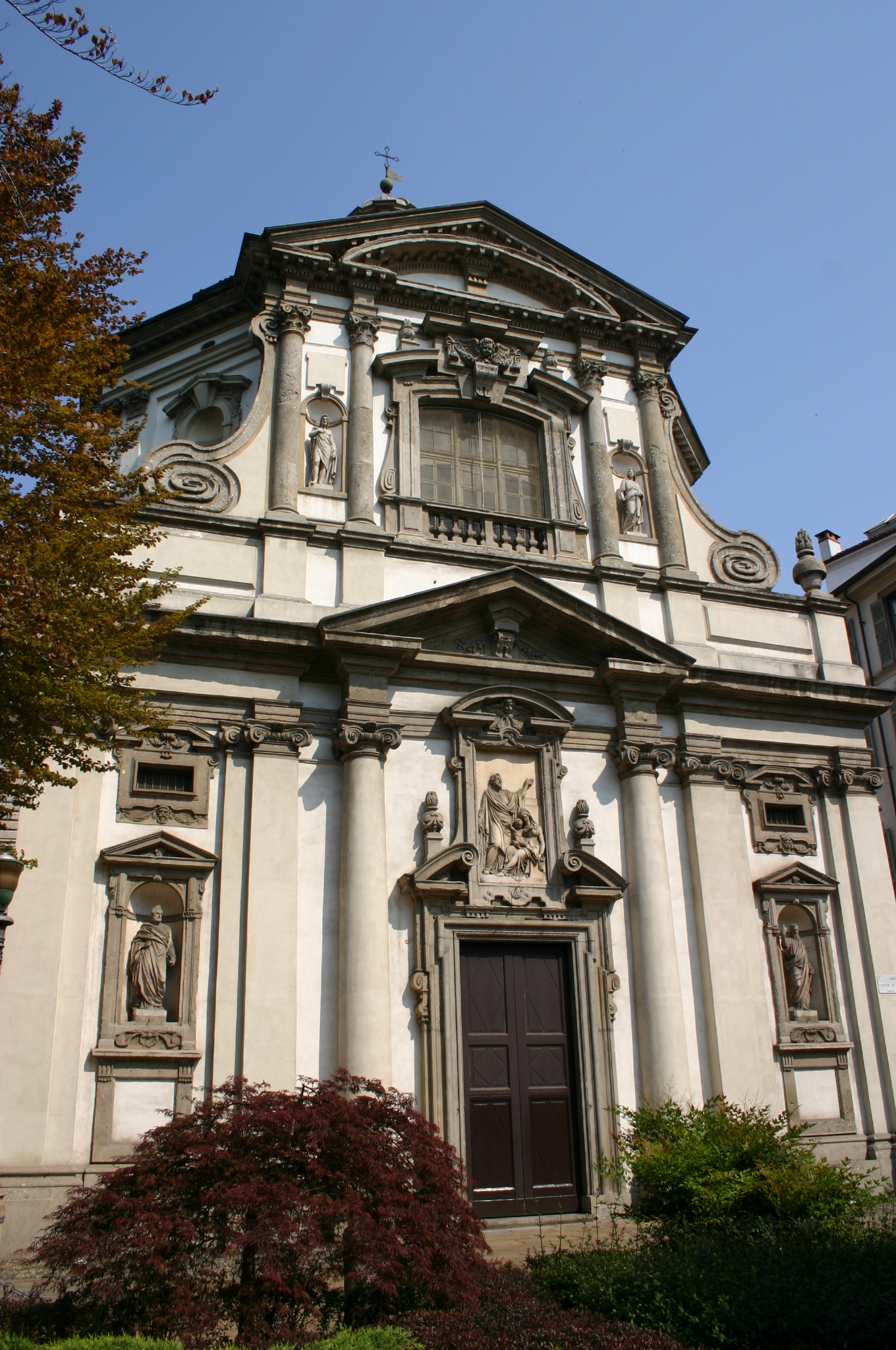
Not far from the Scala along Via Verdi, you can find the little gem of St. Jospeh's sanctuary, the first example of fully baroque architecture in Milan and virtually unaltered over time (though the statues on the facade are 18th century additions).
The inside comes as a surprise, after the austere baroque facade, with beautiful art work on the walls and ceilings. Don't forget to admire the original pavement. The church in fact consists of two spaces, one destined for the believers, the other for the priests.
On the right of the church runs Via Andegari, which actually was the first street of Milan to have pavement.
A baroque art museum
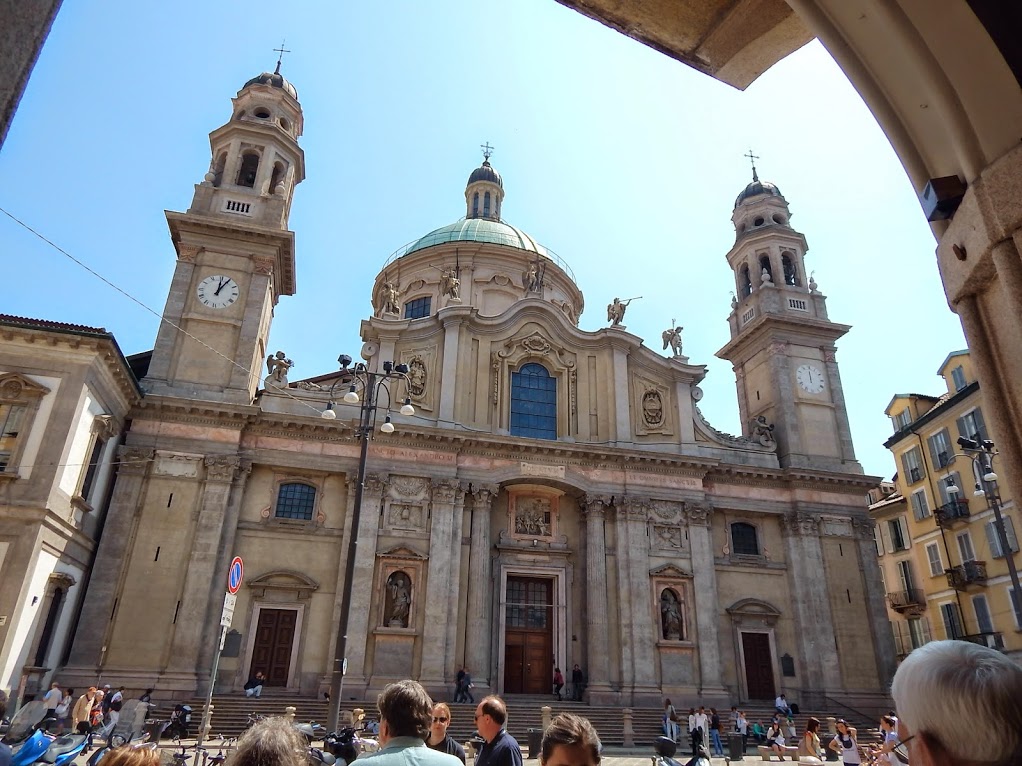
Like the Sant'Antonio Abate, the Sant'Alessandro is situated not far from the Duomo, to the south-west in this case. And also like in the Sant'Antonio, you'll find a treasury of 17/18th century Lombard baroque art here.
An overview of some major works:
- an Assumption, a Nativity and a Crucifixion by Procaccini
- a Flagellation by Crespi
- the confessionals, of engraved wood/marble inlaid with precious stones
- the pulpit, decorated with gemstones,
- the vaulted dome frescoed by Abbiati,
- the main altar with gems bound with gold-plated bronze
The hypothesis is that the praetorium was called “di Zebedia” after a commanding judge of the time. The old square where the church stands is one of the very few spaces in Milan that have remained untainted by post-war reconstruction. At the opposite end of the square is the Palazzo Trivulzio, worth a quick look.
Transport:
Metro 1, 3 Duomo Missori
Bus 54
In the chapel
This small 15th century church is the last surviving element of the former convent of St. Bernadine of Siena of which it was a chapel. It is located more or less between the Colonne di San Lorenzo and Sant'Ambrogio Basilica. The church was restored several times.
Inside the church there are some admirable 13-16th century fresco' s. Furthermore there are works by an anonymous Lombard painter: "Angels and Symbols of the Evangelist", "Nativity", "Flight to Egypt", "Annunciation" and a "Madonna with Child and Saint Agnes" attributed to Foppa or Zenale.
Via Lanzone 13, 20123 Milan
Trompe l'oeil
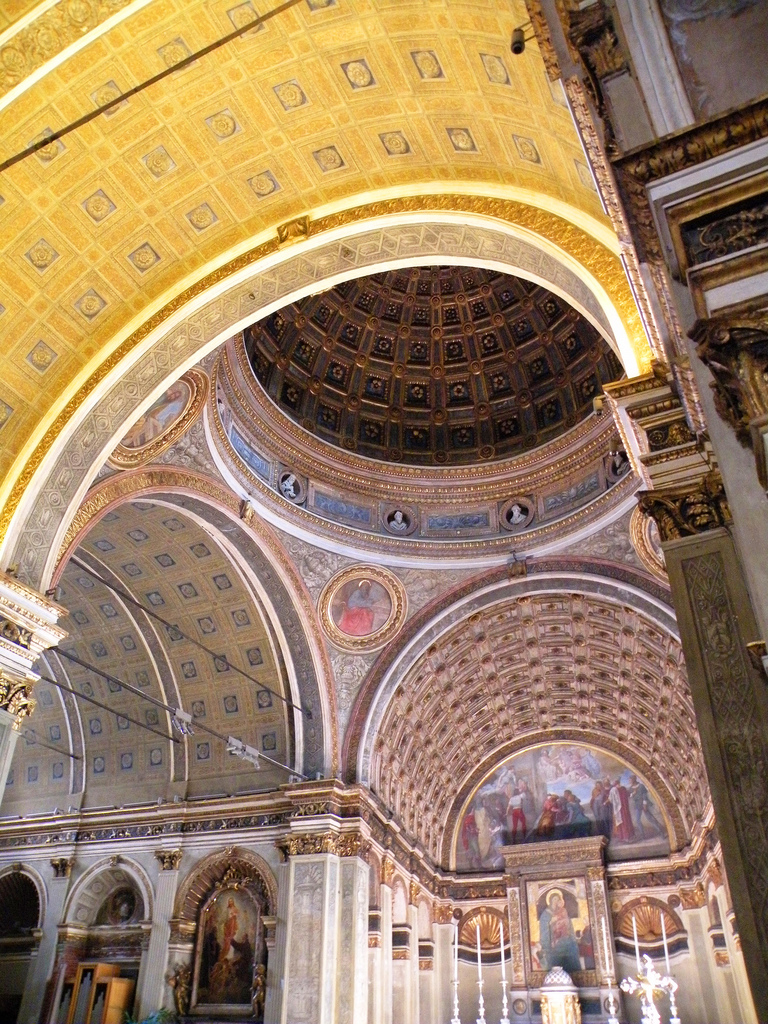
There are a few reasons have a quick peek into this church (only a few footsteps away from Piazza Duomo, south west):
- the trompe l'oeuil choir, painted by Bramante, to compensate for the lack of a real one (as there was no space for it due to the road behind)
- the 9th century Cappella della Pietà, (mortuary chapel of San Satiro) with the 15th century terracotta Pietà of De Fondulis
- the Romanesque campanile (bell tower) of the 10th century.
The frescoes of Bergogone that used to illuminate the walls of the church are now at the Pinacoteca Brera.
The facade does not date back to the time the church was built, but was completed in 1871. Go by the backstreet to check that the choir is fake indeed!
Partially accessible to the disabled (not the baptistery).
Via Speronari 3, 20123 Milan
English mass on Sunday
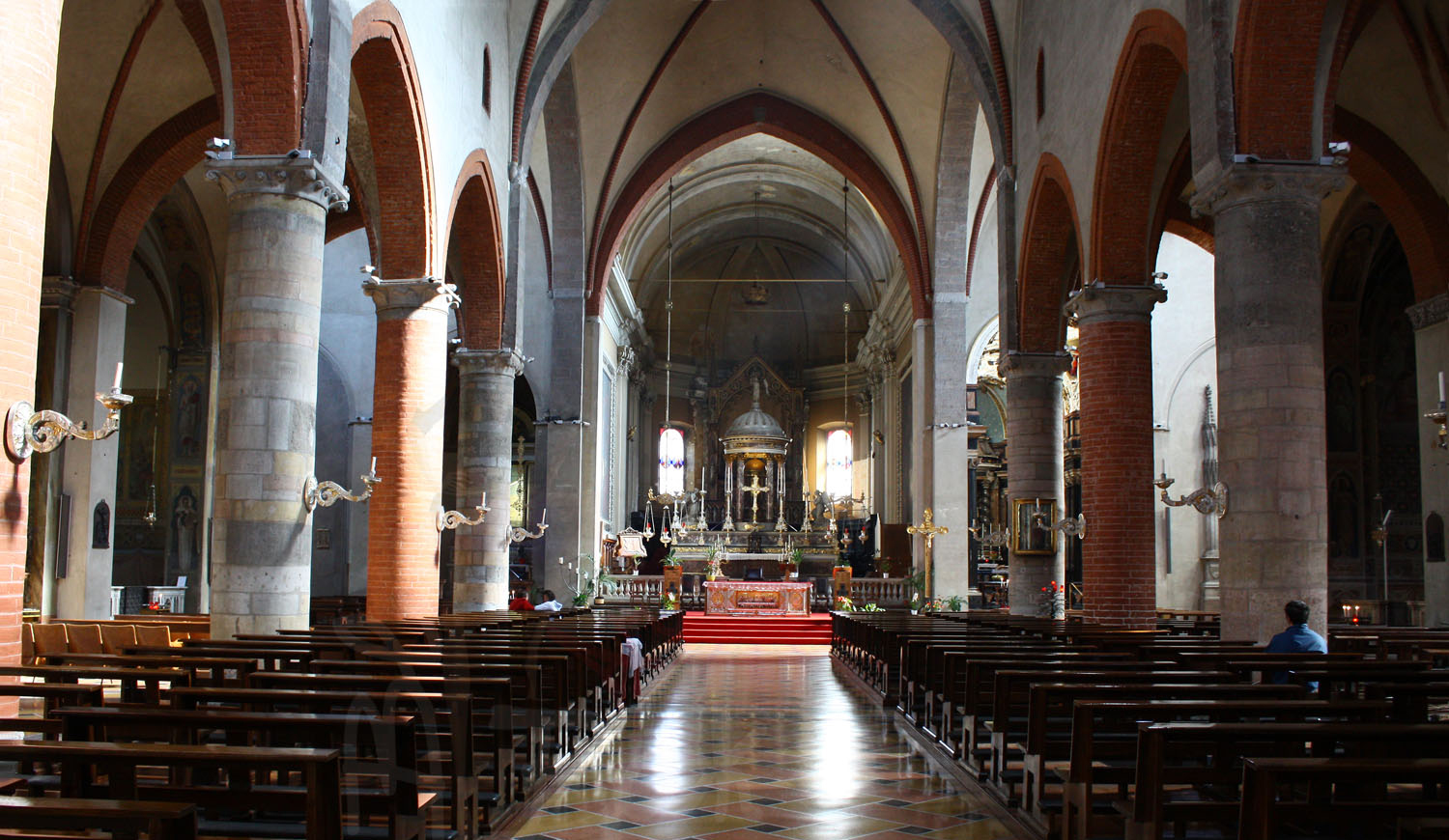
Little remains of the original Romanesque church and Carmelite monastery of Santa Maria del Carmine, the beautiful facade being a 19th century neo-gothic remake by Maciachini.
The church lies at the end of a pleasant square, not far from the Castello Sforzesco. Inside the church you'll find testimonies of Milanese history such as the 15th century tomb of ducal counselor Simonetta.
Worthwhile looking for are several works by Della Rovere better known as Il Fiammenghino: the Risurrezione di Lazzaro in the transept on the right and the Incoronazione della Vergine and Trionfo del Paradiso (16/17th century). Also work by Procaccini.
Sunday Mass includes services in English, at 8.30am, 10.30am and 4.30pm. On Thursday at 5 p.m. there is Mass in English and Tagalog, spoken in the Philippine Republic.
For those who wondered: the fascinating sculpture on the square is by Igor Mitoraj, entitled Il Grande Toscano.
Piazza del Carmine 2, 20121 Milan
A freaky kind of place
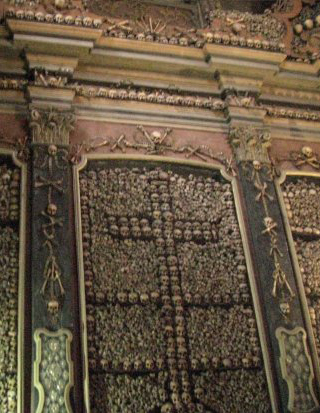
This church, situated a little north of Ca'Granda, is mainly known for its bizarre ossuary, the chapel that is decorated with the skulls and bones of the former cemetery. Not for the faint-hearted!
In 1210 the adjacent cemetery ran out of space and the ossuary was built to hold bones. The church was attached later, the current one originates from the 18th century.
The small, decorative altar in the chapel is surrounded by votive offerings and relics
The vault painting in the ossuary is by Ricci depicting the "Triumph of the Soul Among the Angels".
The 16th century paintings inside include images of Saint Lucio, patron saint of cheese makers, whose confraternity is located in this church.
Inside the church, don’t miss the altar dedicated to Maria Magdalene, with a painting by Ferrario and the altar dedicated to Saint Rosalia.
According to a legend, on 2 November, All Souls, the bones of a little girl on the left of the altar return to life, leading all the other skeletons in a sort of dance macabre.
See the 360Cities website for a panoramic view of the skulls & bones. Partially accessible to the disabled (several steps to overcome).
A bite of Italian:
ossa is the plural of osso, bone (ossobuco= bone with a hole in it) and one of those few words that change gender when set in plural
Via San Bernardino 1
A Lombard Pantheon
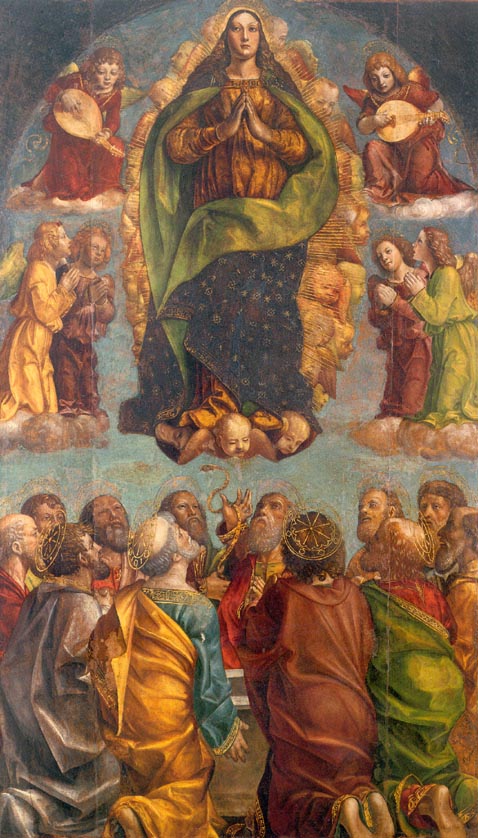
This 19th century neoclassical cylindrical temple was constructed to replace the 14th century Santa Maria dei Servi. It is located at the end of the Corso Vittorio Emanuele that runs from the Duomo to the north east. The main reason for a look inside is the presence of artwork of the original church, like:
- the Orazione nell'orto,by Lomazzo,
- the Assunta by Zenale
- the chapel of Giovannangelo Porro
Partially accessible to the disabled (some steps).
Piazza San Carlo
Church of the Jesuits
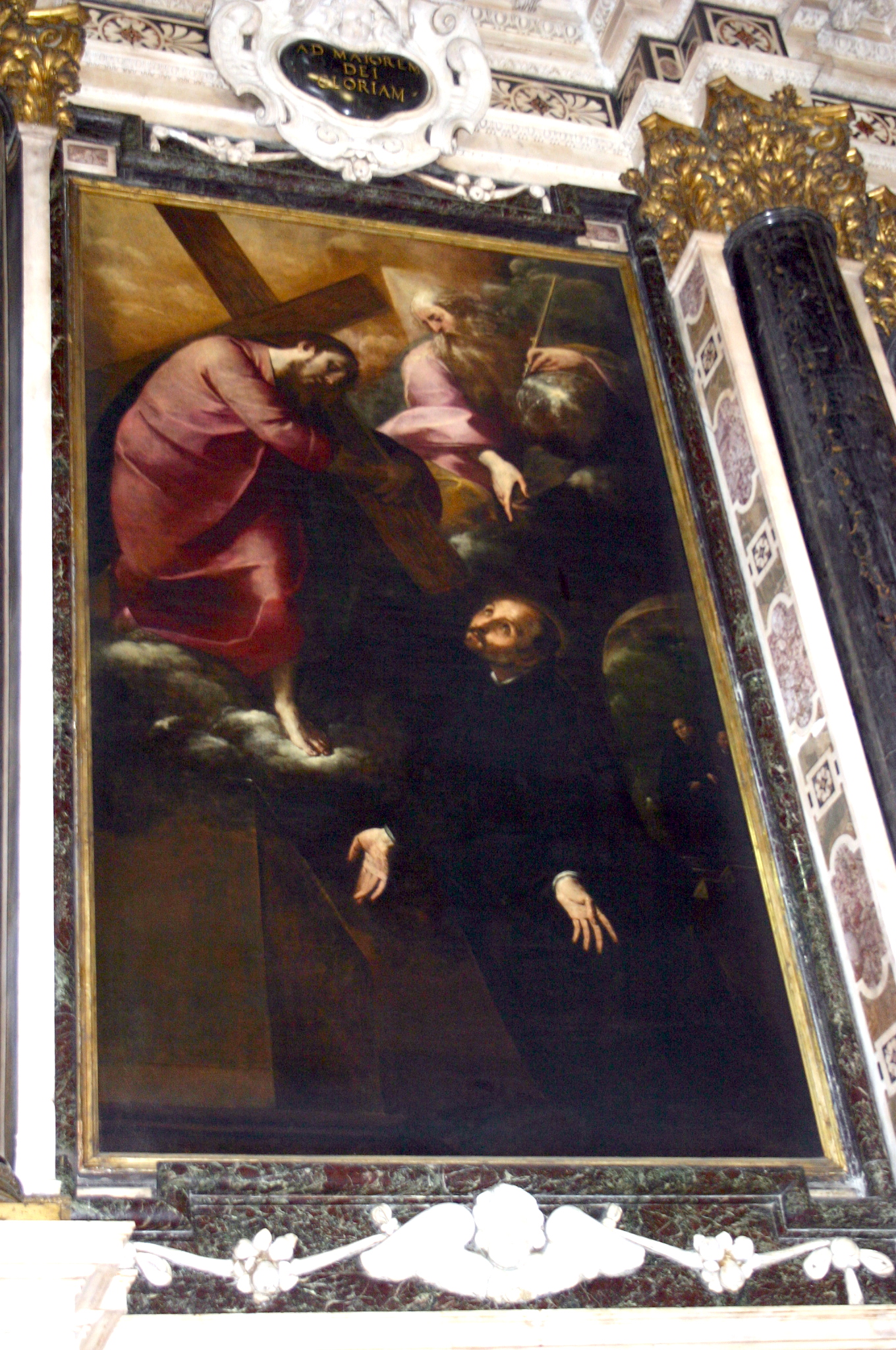
In plain city center, behind the Palazzo Marino, you'll find the church of Santa Maria della Scala in San Fedele, San Fedele in short, built in the 16th century for the Jesuits. The beautiful facade was only completed in the 19th century. Main artworks include:
- a Pietà by Peterzano
- a St. Ignatius by Crespi (il Cerano)
- a Transfiguration, by Fontana
- the apse, crypt and the rear dome by Richini
Nowadays the San Fedele is an active cultural center with a theater, cinema, library and exhibition spaces.
Not accessible to the disabled.
Piazza San Fedele
A Baroque feast
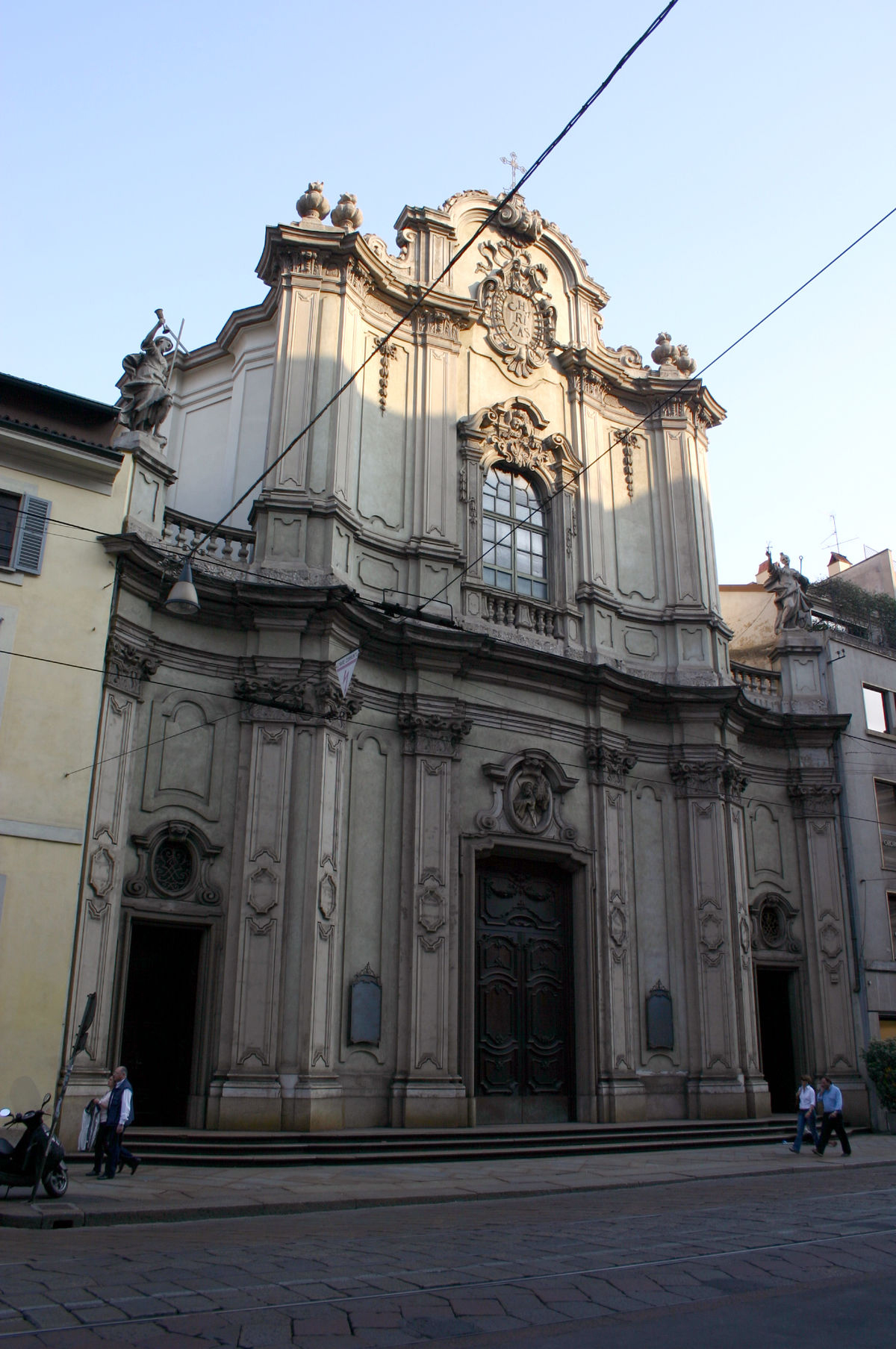
If you happen to walk along the Via Manzoni, which will very likely happen as the street has a lot of sights and shops to visit, you may well have a peek inside the 18/19th century San Francesco di Paola church to be astonished about the rich late baroque/rococo interior. Worth seeing:
- -the monumental marble alter
- the fresco of San Francesco da Paola
- the chapel of San Francesco di Sales
- the sacristy with works by Gual
- the carved wooden confessionals
- the painting of San Michele dei Guerini
- the presbytery.
Via Manzoni 30, 20121 Milan
Where St Ambrose baptised St Augustine
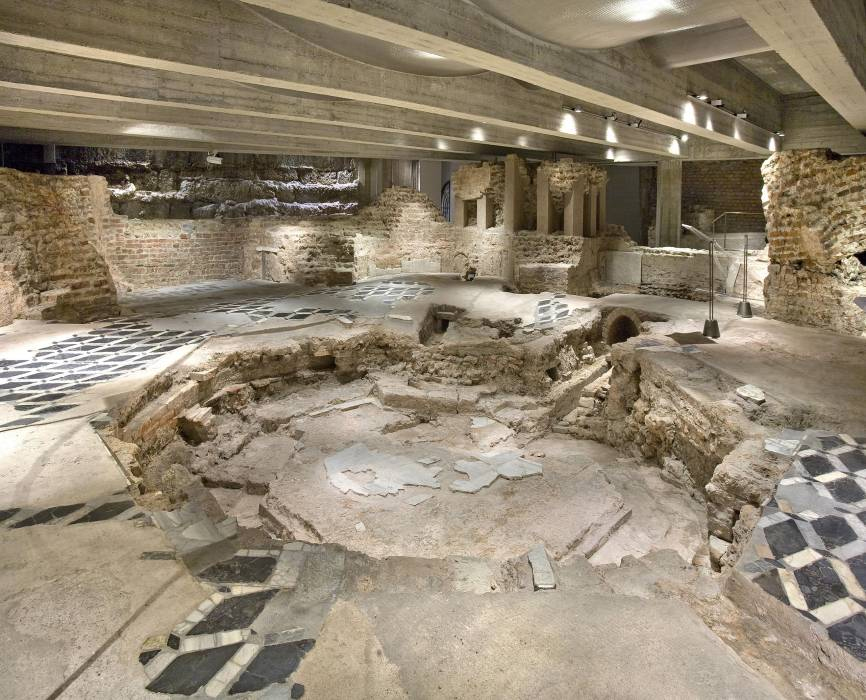
Directly after the main threshold of the entrance of the Duomo, there are stairs that lead you down to remains of the baptistery of San Giovanni alle Fonti, that used to be part of the Santa Tecla Basilica that no longer exists (demolished to make place for the Duomo).
This is a truly historical spot as it was in this baptistery that St Ambrose finally christened St Augustine, who was to have a decisive influence in the history of catholicism over the ages.
Parts of the apse of the Santa Tecla (floor tiles) are visible through a glass window at the Duomo Metro station.
Piazza del Duomo
The crypt and the church of the Valdensians
In the middle of the Piazza Missori, behind the Sant'Alessandro church, the crypt of the ancient Basilica of San Giovanni in Conca can be found. The original basilisk was destroyed in the 11th century, but reconstructed in the 18th to become the church of the Waldensian church until it was finally demolished in 1949. Now only the crypt remains here, which is a unique example of a roman crypt in Milan. On the surface you can only see part of the wall of the apsis.
Thanks to the volunteers of the Touring Club Italiano the (underground) crypt can be visited on Friday and Saturday. You may watch a video impression on YouTube. Th facade of the original church can still be seen, as it was reconstructed from the remains, to form the facade of the Waldensian church in Via Francesco Sforza 12. Here, very recently (June 26, 2011) the first gay marriage in Italy was celebrated.
Piazza Missori, 20123 Milan
The most beautiful bell tower of Milan
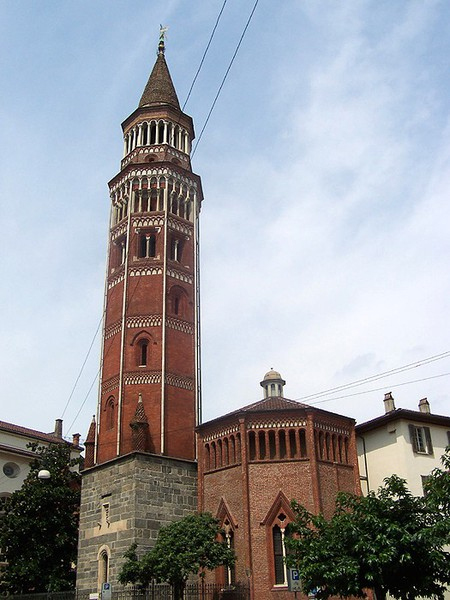
More or less enclosed by the Palazzo Reale is the magnificent 14th century bell tower and church of San Gottardo.
Saint Gotthard is the patron saint of gall stones and gout, illnesses which are said to have afflicted Azzone Visconti, who initiated the church to be built. His tomb can be found in the church.
The tower starts out square-shaped, then becomes an octagon, and is topped with a cone cap. It kept its original look just as the lovely apse.
The clock on the tower actually is the first of its kind to be installed. The sound of the hours ringing determined life in the district in such a way, that it was named after it (contrada delle ore) and there is still the Via delle Ore close by.
Inside there is a recently restored fresco of a crucifixion scene by an unknown follower of the master Giotto, as well as other frescoes commissioned by the Visconti family from Tuscan masters.
Completely accessible to the disabled, but some steps to get to the fresco room.
Via Palazzo Reale 14, 20122 Milan
A reconstruction
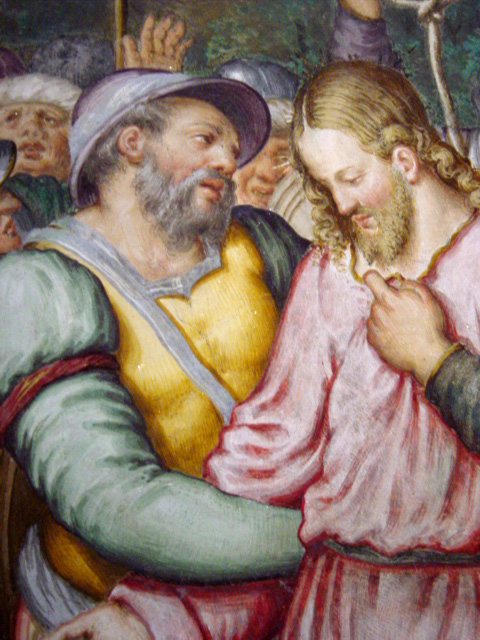
The Cathedral of San Lorenzo, along the Corso di Porta Ticinese, is mainly a rebuild of the Roman original, as it was destroyed several times. The 17th century dome is the largest in Milan.
The interior has a central ground plan in contrast to the majority of Christian cathedrals, due to its Byzantine origin. It was erected as Arian church and typically has three peripheral chapels, dedicated to Saint Aquilinus, Saint Hippolytus and Saint Sistus.
Don't miss the mosaic of Christ among the Apostles in the chapel of Saint Aquilinus.
There is a peculiar Last Supper fresco, a clear copy of Leonardo's, in the left part of the church.
The most suggestive view of the Basilica can be appreciated from the park behind it, where it is possible to observe the whole apse, including by the peripheral chapels.
Inside the complex there is a 170-seat cinema/theater that hosts a variety of events.
In front of the church are the famous Colonne di San Lorenzo, a place to hang out in the evening. At the back is the Parco delle Basiliche, on the other end of which lies the Sant'Eustorgio Basilica. On the 360visio.com website you can admire a virual tour of the cathedral (flash player required)
Corsa di Porta Ticinese 39
A Renaissance masterpiece
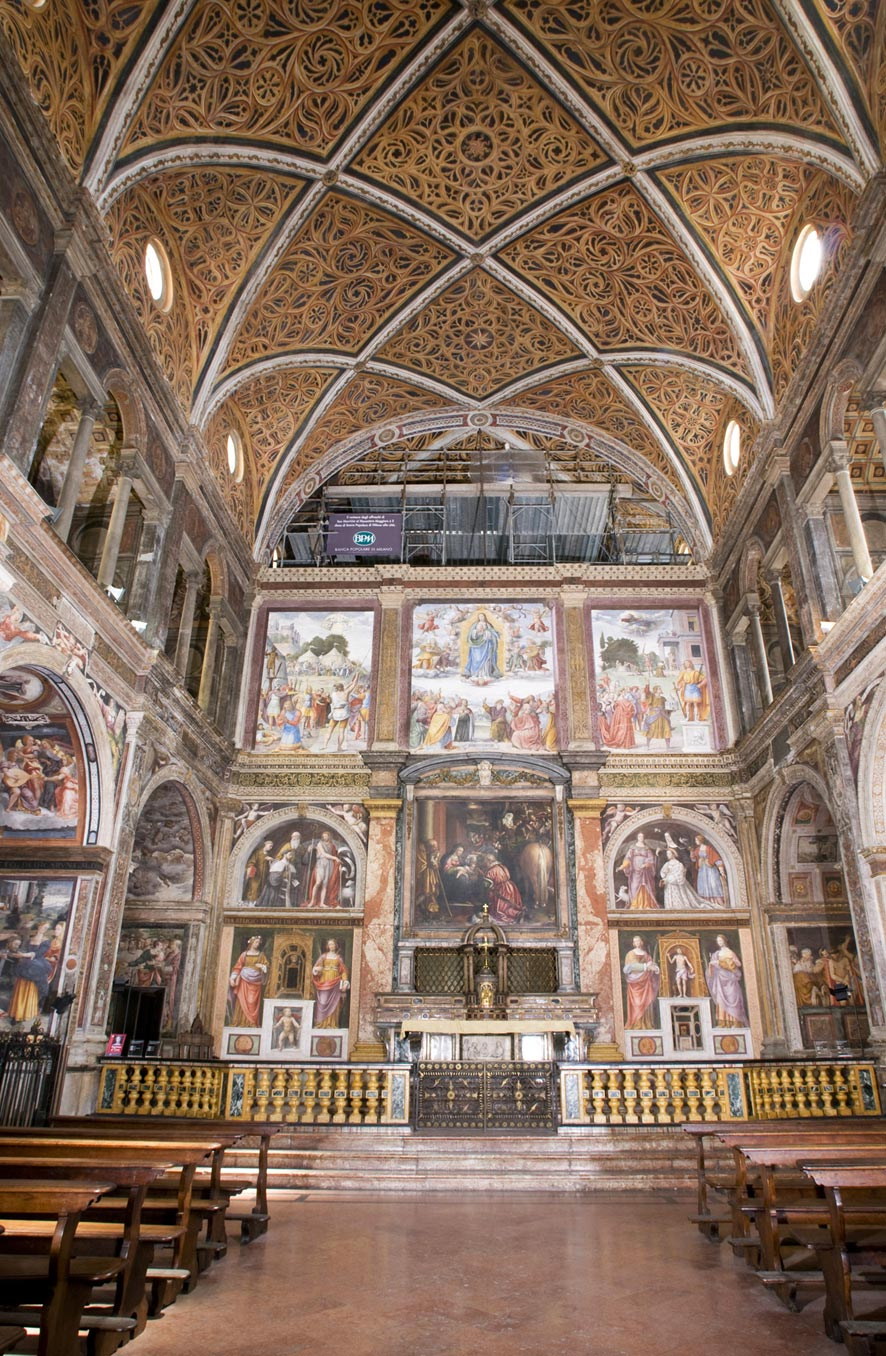
This is a beautiful Renaissance church, next to a monastery and situated along the Corso Magenta, the street that leads up to the Santa Maria delle Grazie (Last Supper).
The church is decorated with splendid 16th century frescoes, mainly by Luini, very recently restored (2010). Highly recommended.
Other highlights:
- the Cappella Simonetta with the Deposizione di Cristo by Callisto Piazza
- the Adorazione dei Magi by Antonio Campi
- the 16th century organ in the Capella Simonetta
- the Cappella Besozzi: fresco of the decapitation of Saint Catherine
- the dividing wall, attributed to Luini
There is a virtual tour at the MilanArounder website (flash player required).
Part of the former monastery is now taken up by the Museo Archeologico.
Each year in spring a cycle of concerts is held in the church, the Musica e Poesia a San Maurizio.
In July and Sept/Oct there are special Thursday evening openings till 10pm where your visit is accompanied by Renaissance and Baroque music.
Not accessible for the disabled (7 steps).
Corso Magenta 15, 20123 Milan
A family mausoleum
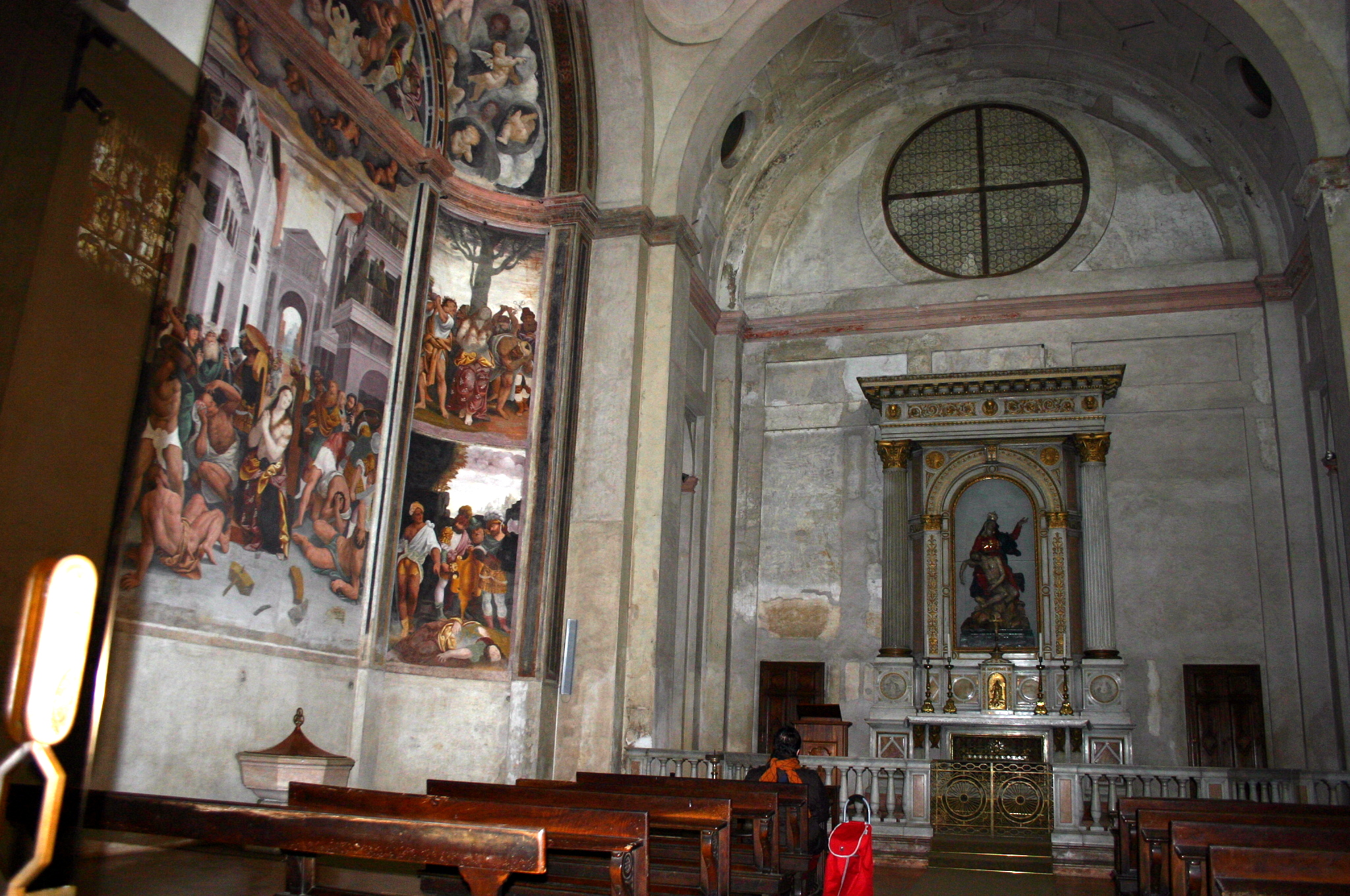
Next to the University complex (Ca'Granda) lies one of the oldest churches of Milan, originally commissioned by St Ambrose (4th century), but reconstructed and extended in later eras. It's original structure is still visible though.
The main reason to visit this church is the Capella Trivulziano, the mausoleum of the Trivulzio family, stadholders of Milan after the Sforza reign. The chapel was built in front of the entrance of the original church and contains a.o. the remains of Gian Giacomo Trivulzio, with the epitaph: "He who never was restful, rests now: be quiet."
In the little Cappella di Santa Caterina d'Alessandria (enter through a small door) you'll also find frescoes, such as the beautiful Saint Catherine martyrdom by Lanino.
Also note the carved wooden nativity scene by Adam Kraft, from the16th century, the Last Supper by Lanino and the stained glass window representing the Episodes of the Life of the Martyr.
Part of the basilisk is a small lapidarium, stone museum. Partially accessible to the disabled (a few steps)
Piazza San Nazarro, 20122 Milan
A temple against the plague
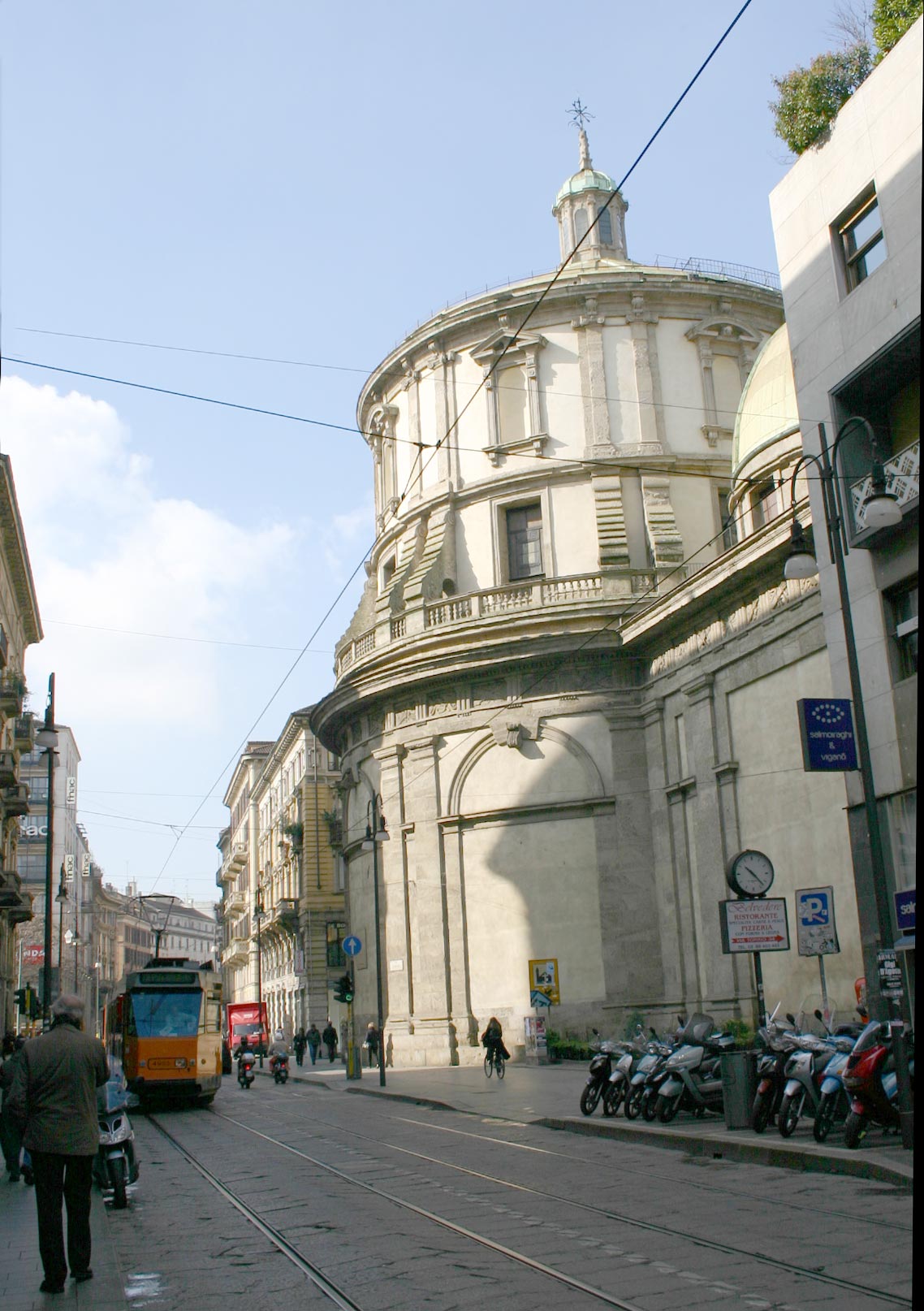
Worth a quick look if you happen to pass by (it's close to city center), is the votive temple of St Sebastian, patron saint of those with contagious diseases.
It was erected at the end of the 16th century on initiative of the citizens of Milan to express their gratitude to God for the end of the plague.
Inside you can admire the heavenly vision of Comerio's Evangelists and Church Fathers on the cupola ceiling.
As this is a civic place of worship, the temple is used by many trade associations, armed forces and sporting associations for their religious services.
Not accessible for the disabled.
Via Torino 28, 20123 Milan
A Russian Orthodox Church
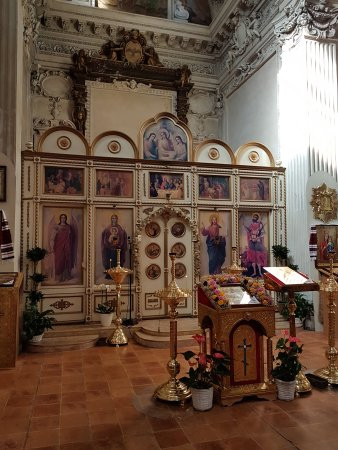
In between of the Corso Vittorio Emanuele and the Corso Europa there is the tiny 17th century church of San Vito "in the little pasture", though no grass is to be seen here.
After the devastations of WWII the church was closed for decades, until the Russian Orthodox community decided to have there church here. Inside there are still some frescoes of I Fiammenghini to be admired.
Piazetta San Vito ai Pasquirolo, Milan
For baroque lovers
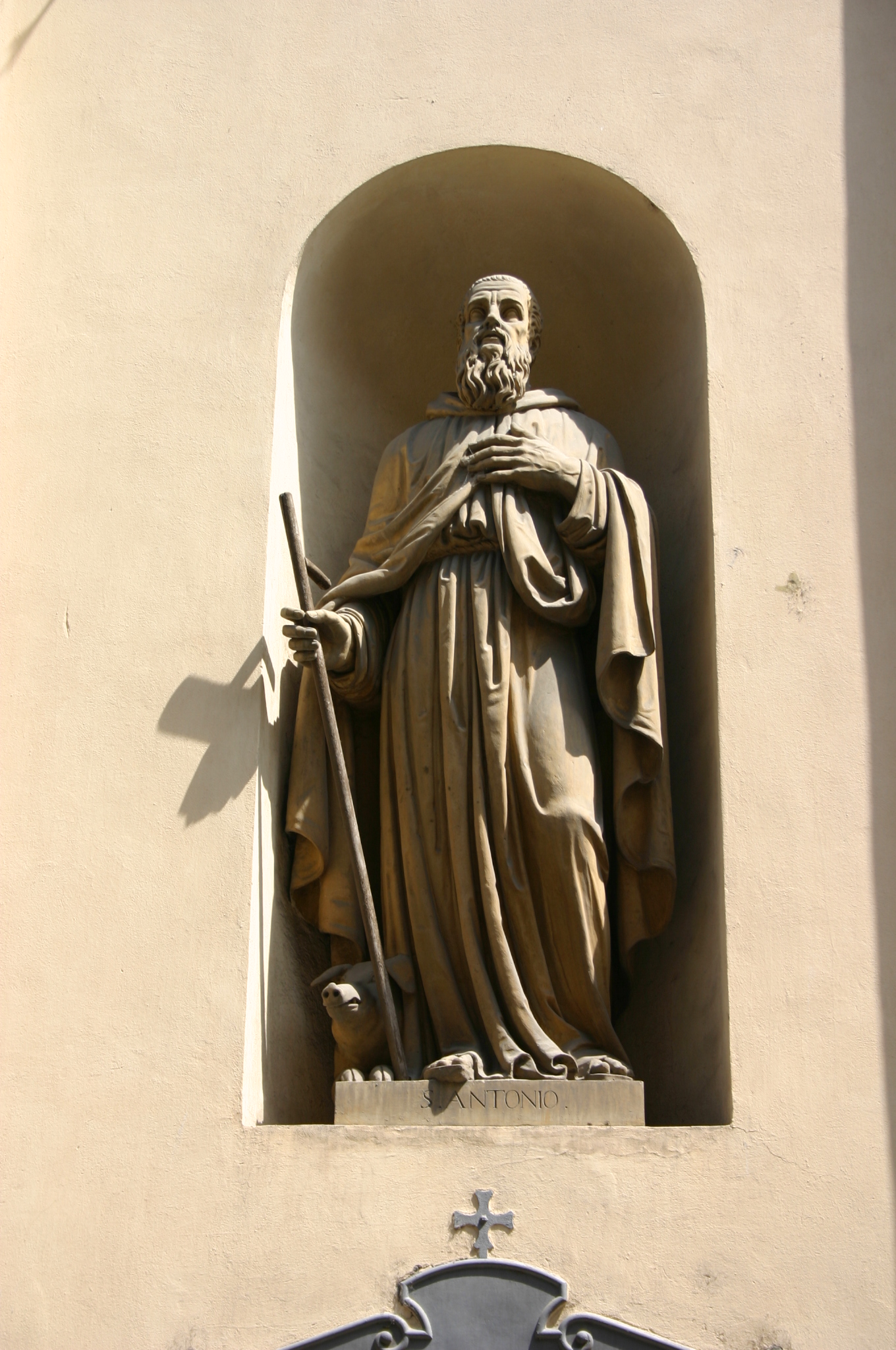
The rather discreet 17th century facade of this church, only a short walk south of the Duomo, doesn't quite prepare you for the baroque wealth of artwork inside: frescoes, paintings, stucco, marble and gilding and ornaments.
Many 17th century artists decorated the church such as Carracci, Tanzio da Varallo and Cairo.
Important works of art in the church:
- Resurrezione di Cristo by Cerano (Crespi)
- L'adorazione dei Magi and a Nativity by Morazzone
- a fresco by Carloni (Genovese)
- a cycle dedicated to the Virgin Mary by Procaccini
- frescoes by Caccia, (Il Moncalvo) with scenes from the Old Testament
- choir-stalls designed by Richini
Not accessible for the disabled.
Via Sant'Antonio 5, 20122 Milan
 Porta Magenta
Porta Magenta
The church of the Last Supper

The Renaissance church and Dominican convent of Santa Maria delle Grazie, a World Heritage Site, is one you cannot afford to miss during a stay in Milan, if alone for the presence of the Last Supper of Leonardo in the refectory. It is located near the end of the Corso Magenta.
Originally designed by the architect Solari, the church was partially redesigned on command of Ludovico il Moro, probably by the famous Renaissance master Bramante. To him are attributed the apse area, the Renaissance tribune, the cloister and the sacristy.
Especially worth mentioning:
- the main door of the church from 1463,
- the Our Lady of Grace Chapel with a pre-Leonardo tempera and 7th century altar. The painting was often worshipped during the plague as mentioned by Manzoni in his Promessi Sposi
- the monument erected for Ludovico il Moro, topped by a representation of the old facade of the Duomo
- the frescoes with the Storie della Passione by Ferrari
- the sacristy, reached from the cloister, with engraved cabinets with episodes of the New and Old Testament
There is an entrance fee of 10€ for the sacristy, with the MilanoCard you get a 20€ discount. Opening times for the sacristy: Tues-Sun 8:30-7; Mon 9:30-1 & 2-6.
A virtual tour is present on the 360Cities website (flash player required).
To see the refectory with the Last Supper you need to make reservations (way) in advance, see the corresponding entry in this guide.
Completely accessible to the disabled.
Piazza Santa Maria delle Grazie, 20123 milan
A 16th century interior
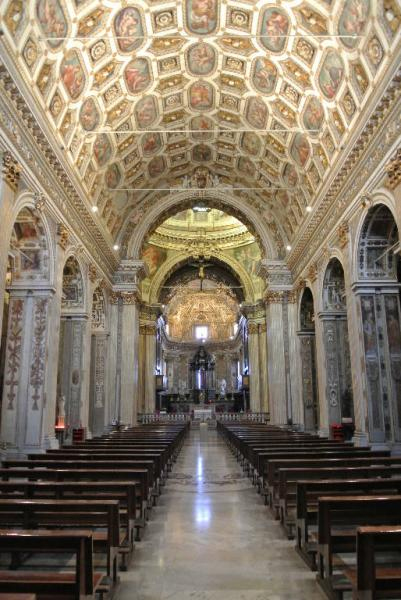
Close to the Museo delle Scienze (which is located in the former cloister of the church), you'll find the basilisk of San Vittore, one of the oldest buildings of Milan.
This church is worth a quick visit if you are near, as its interior with its stuccoes, frescoes and paintings represents an almost perfect example of a 16th church interior.
Worth viewing:
- the wooden choir with images of San Benedetto
- the baroque Arese Chapel
- the inside of the dome with frescoes by Crespi and Caccia
- a cycle on St Benedict by Figino
The mausoleum is decorated with extraordinary 16/17th century frescoes of Il Moncalvo and others.
Next to the San Vittore is the archeological site of the Imperial Roman Mausoleum which can be visited from Fri-Sun 9:30-5:30 (volunteers of the Touring Club Italiano present).
Not accessible for the disabled.
Via San Vittore 25, 20123 Milan
 Porta Ticinese - Navigli
Porta Ticinese - Navigli
Two churches along the canal
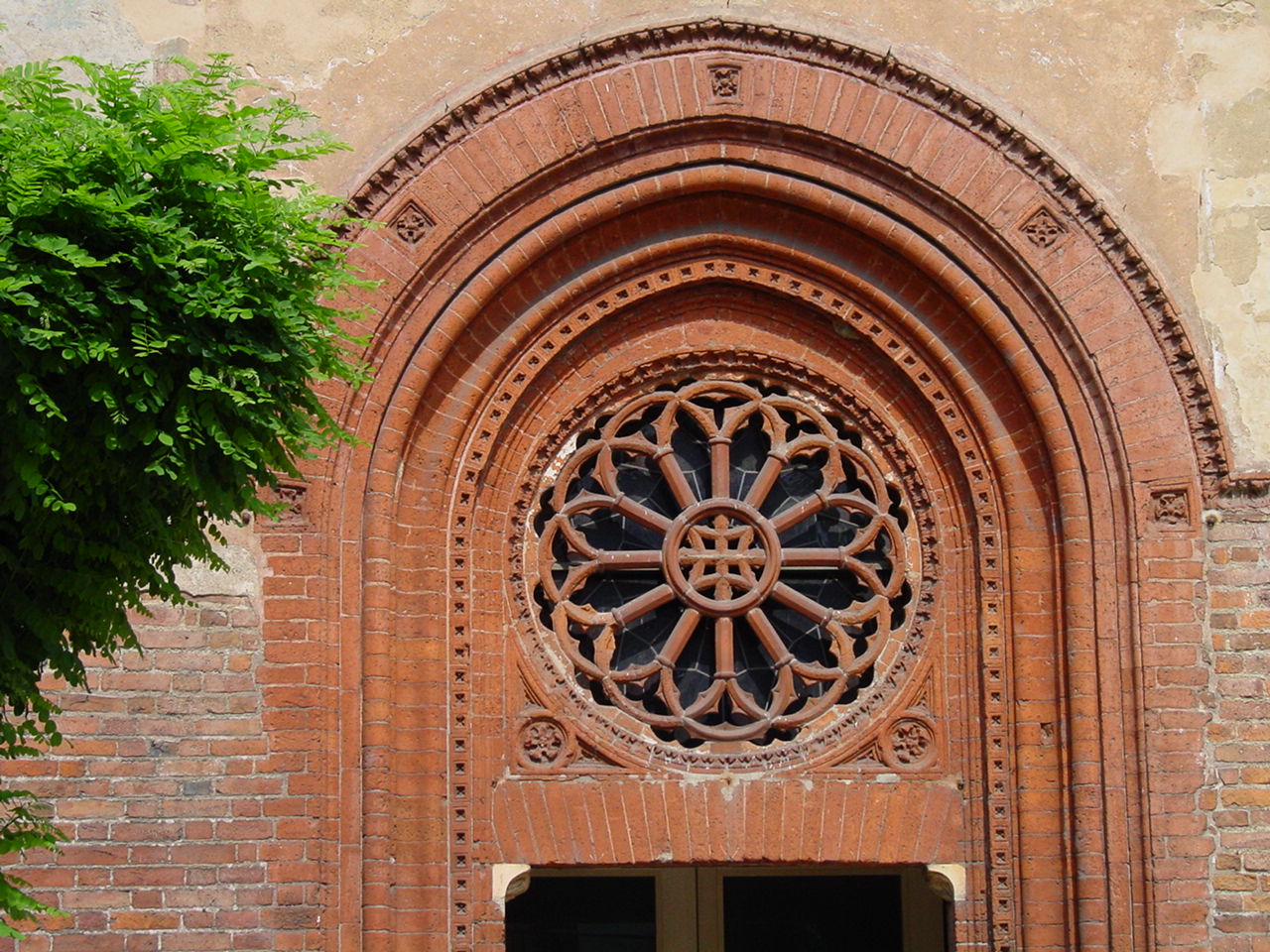
Along the Naviglio Grande, quite a distance out of city center, the San Cristoforo church is located.
The complex of San Cristoforo consists of two buildings, a Romanesque and a Gothic one. The latter is known as the Ducal Chapel because it was built by Gian Galeazzo Visconti as the fulfillment of the vow made to Saint Christopher during the plague (14th century).
The façade of the Romanesque section has a portal in traditional Lombard terra cotta, added in 1398, with a Gothic rose window above, and the emblems of the Visconti and the city of Milan.
Frescoes from the schools of Bergognone and Luini can be admired in the Ducal Chapel.
In former times the bell tower of the San Cristoforo functioned as a lighthouse for the barges arriving from the river Ticino.
Via San Cristoforo 3, 20144 Milan
The lesser known one
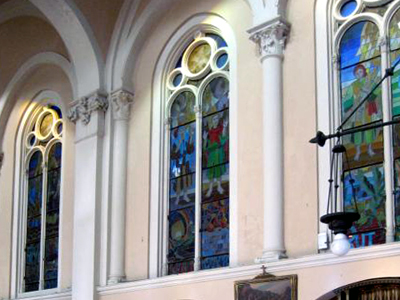
Along the Naviglio Grande, not far from the Vicolo dei Lavandai, lies this early 20th century church which is a mix of styles (neo medieval, Gothic, Liberty). Full name: Santa Maria delle Grazie al Naviglio.
Inside you'll notice the light, beautifully shining through the modern stained glass windows.
Completely accessible to the disabled.
Alzaia Naviglio Grande 34, 20144 Milan
A catalogue of christian architecture
The small basilica of San Vincenzo represents an almost intact example of 9th century church architecture, as it hardly underwent reconstruction in later era. It is located somewhat north of the Darsena naviglio.
The designation "in Prato" probably originates from the estate the church originally belonged to, named Prata.
Not accessible to the disabled
Via Daniele Crespi 6, 20123 Milan
. Porta Vigentina
Porta Vigentina
Also called "dei miracoli"
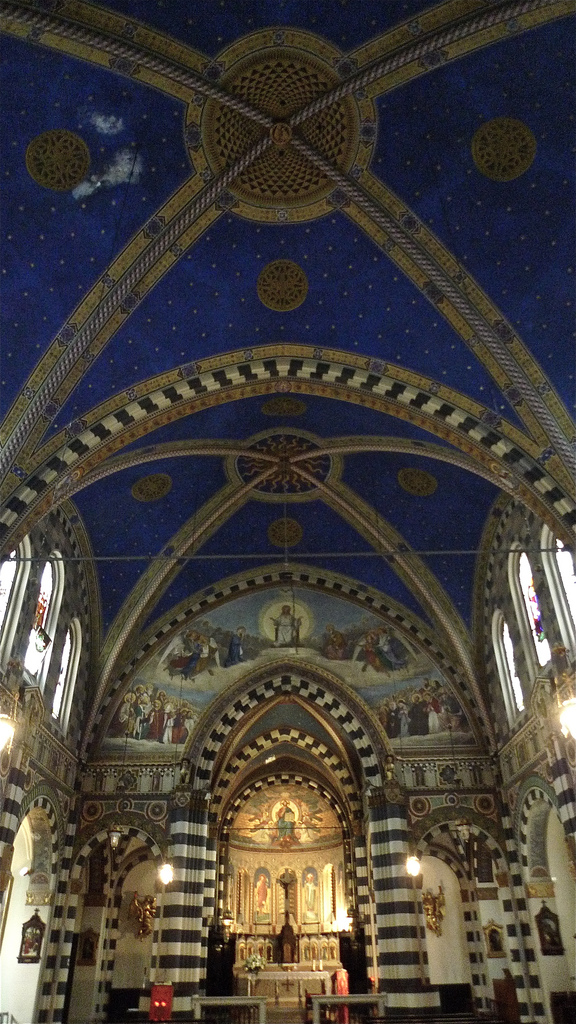
This church is originally a 15th century construction, built to house a miraculous icon of the Madonna. The first part of this church to be built was the octagonal dome. Later (16th century) the square portico in classical style was added, as well as the massive facade.
The interior houses numerous works by Milanese Renaissance and Baroque artists.
Especially notable are:
- the Baptism of Jesus by Ferrari
- the Fall of St. Paul by Moretto
- the Sacra Famiglia and the San Girolamo by Bordone
- the wooden choir of Alessi
- the Our Lady of the Assumption by Fontana
- the Vergine che adora il Bambino by Bergognone
Some pictures of the artworks are present on the Santa Maria website.
Annex to Santa Maria is the Romanesque church of San Celso. The facade (remade in the 19th century) has a Romanesque portal with animal figures decoration. Also from the 11th century is the bell tower.
For centuries it has been tradition for Milanese brides to carry a bunch of flowers to the statue of the Virgin Mary displayed in the church, right after their wedding.
Accessible to the disabled (2 steps at the entrance).
Corso Italia 37, 20122 Milan
 Porta Vittoria
Porta Vittoria
St Bernard of Clairvaux was here?
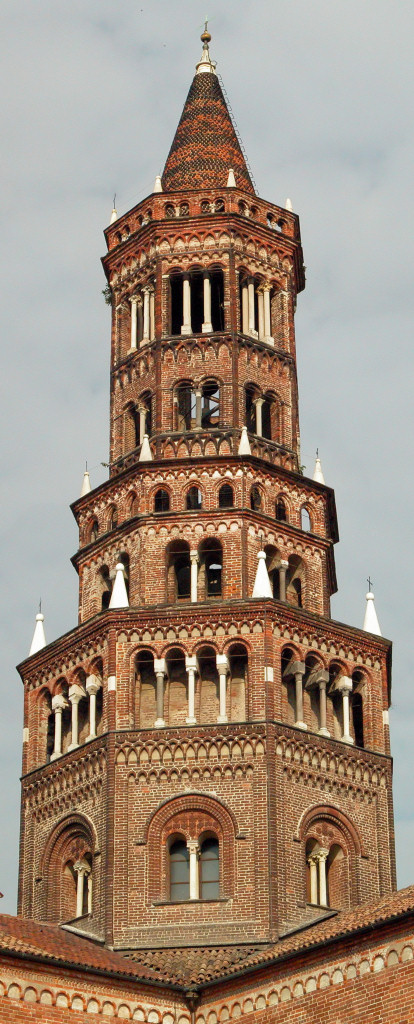
This abbey was founded (12th century) by St Bernard of Clairvaux as part of a chain of Carthusian abbeys all over Europe. Culture and spirituality can be sensed here, where you tread on truly historical ground.
The abbey is located a few km outside of Milan, in the hamlet properly named after its founder, Chiaravalle.
Worth seeing:
- the tower, in fired brick and Candoglia marble
- the roman central door with wings sculptured in relief
- the cloisters, with columns and capitals that portray men and animals
- the 14th century paintings
- the 16th/17th century frescoes by Luini and others
- the 17th century portico
There are also engravings at the entrance to the chapter, east of the cloister, attributed to Bramante, that display a view of Milan as it was at the time: the Filarete tower of the castle, the Duomo without the statues, the Santa Maria delle Grazie (of the Last Supper) still under construction.
Via Sant'Arialdo 102, 20139 Milan
Modern religious art
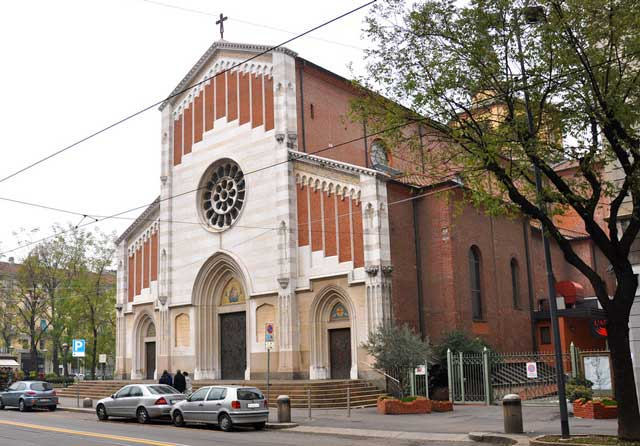
In case you are interested in modern religious art, you may want to visit this church, which has a collection. The church itself dates from the neo Romanic period (19th century), but its facade dates from 1927.
Worth noting:
- the altar of the Madonna della Misericordia by Agnol Domenico Pica
- the frescoes in the vault of the presbytery by Carpi
- the via crucis also by Carpi
- the even more recent baptistery
Via Bonvesin de la Riva 2, 20129
Home of the Order of Holy Sepulcher
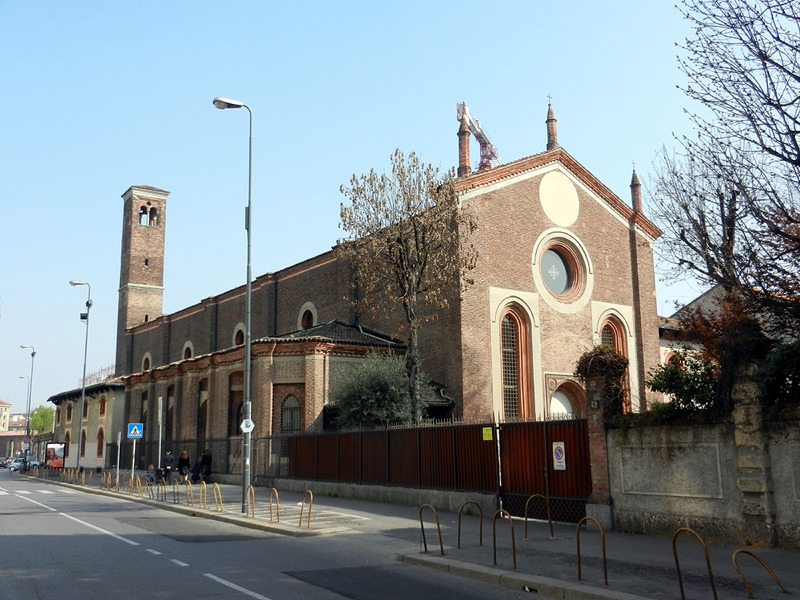
Built in the 15th century this church changed hands and function several times during the ages. Since 1967 the building is the property of the Equestrian Order of the Holy Sepulcher, a catholic order that already exists for almost a millennium and is responsible for the presence of Christianity in the Holy Land.
The denomination della pace of the church originates from the fact that in the decorations, e.g. in the representation of the Virgin Mary, the word pax frequently appears.
The interior of the church is rich in decoration: frescoes, stuccoes and paintings. You'll find masterpieces of Ferrari, Luini, Crespi and Procaccini here.
Not accessible for the disabled.
Via San Barnaba 42, 20122 Milan
Second in size only to the Duomo
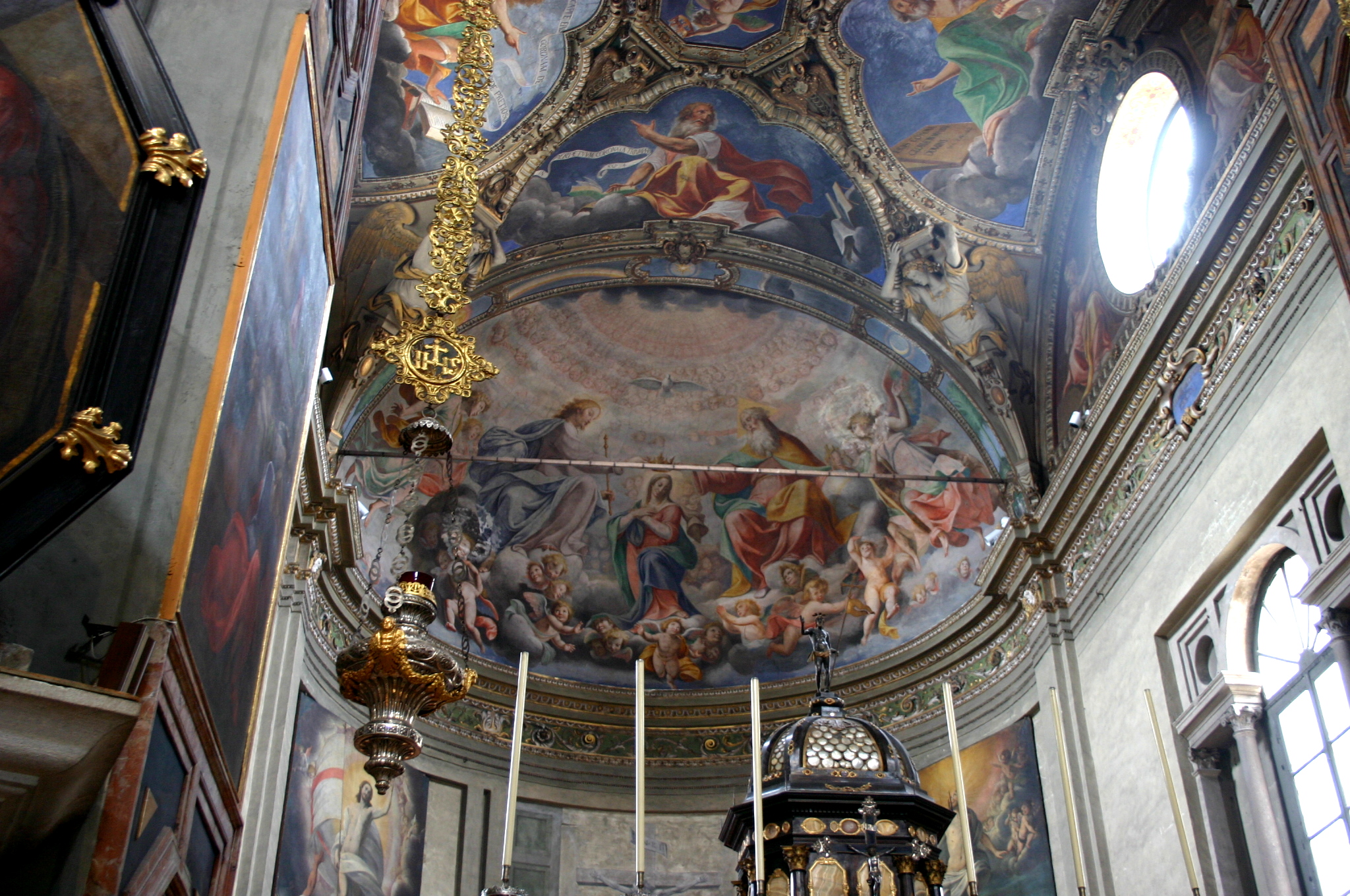
This church is the second largest of Milan, and is beautiful example of late Renaissance design (the Baroque facade is misleading).
The interior offers several artistic highlights, such as:
- Ferrari: Last Supper
- Luini: Deposition
- Crespi: Fast of San Carlo; episodes from The Passion of The Christ. (Christ nailed to the Cross)
- Procaccini: Christ on the Column
- Peterzano: L'Annunciazione and L'Assunzione
- G. Ferrari: L'Ultima Cena
- B. Ferrari: La Pietà
- Campi: La Crocifissione
- Figino: Cristo nell'orto
The Sala Capitolare with the monumental pictorial cycle of Bergognone unfortunately only opens after reservation, at a cost of 50 euro for lighting up the room(!).
Accessible to the disabled.
On the location of the former cloister you'll find the Conservatorio Musicale Giuseppe Verdi where classical concerts are performed (not to be confused with the Auditorium LaVerdi).
The bishop of Milan, not the birdy
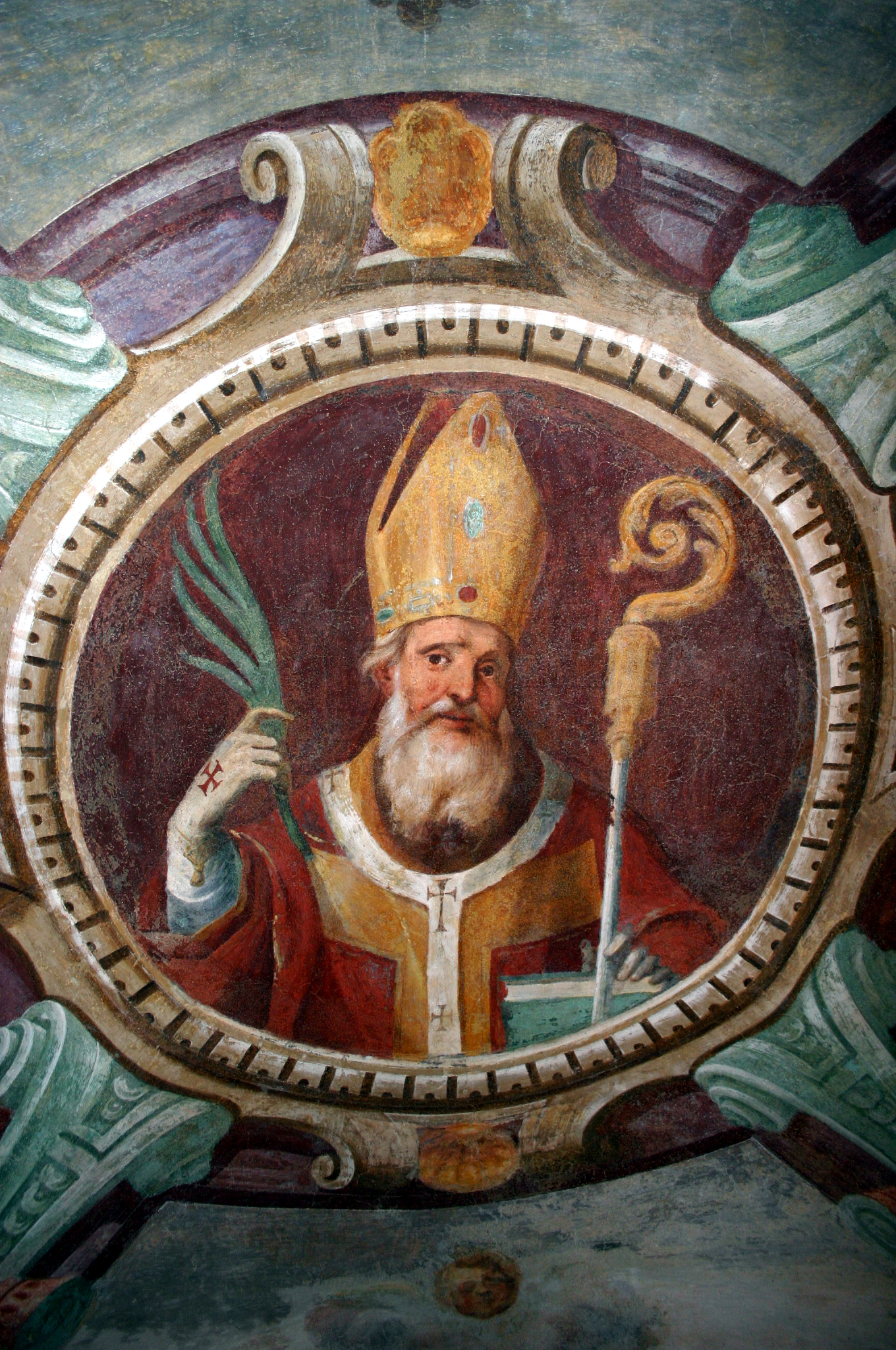
A disastrous "de(con)struction" carried out at the end of the 19th century has turned the facade of the San Calimero basilica into a mishmash of styles. And now, after the '70s tv-series about the little bird Calimero, the name of this church sounds just as stupid ...
Calimerius, in Latin, was bishop of Milan from 270-280, and a martyr as he was killed during the persecutions by Hadrian, being flung headfirst into a well.
Internally there are still some worthwhile artworks to be seen:
- the 15th century crypt with the bones of San Calimero with Fiammenghini frescoes
- the Madonna fra due Sante fresco attributed to Moretti
- a crucifixion of Il Cerano (Crespi)
- medieval frescoes in the sacristy
- a Nativity by d'Oggiono, unfortunately "de(con)structed" as well
At the spot where Calimero's bones were found there is now a peculiar well (see his cause of death) to which miraculous healing powers were (are?) attributed.
Definitely worth a short visit.
Via San Calimero, 20122
The Grifi Chapel
Opposite of the Palazzo di Giustizia lies the San Pietro in Gessate church.
The main reason for visiting this church is the beautiful Grifi chapel, with a series of 15th century frescoes about the life of St Ambrose, by Butinone and Zenale. There is also a fresco of Bergognone which depicts the funeral of St Martin.
The chapel is named after Ambrogio Grifi, who commissioned the frescoes and whose tomb is also present in the church. The original pulpit is now at the Castello Sforzesco. See the panorama of the chapel at the 360Cities website. The facade of the church is the product of a restoration intervention dating back to 1912. The church is accessible for the disabled, one step of 9 cm to overcome.
Synagogue of Milan
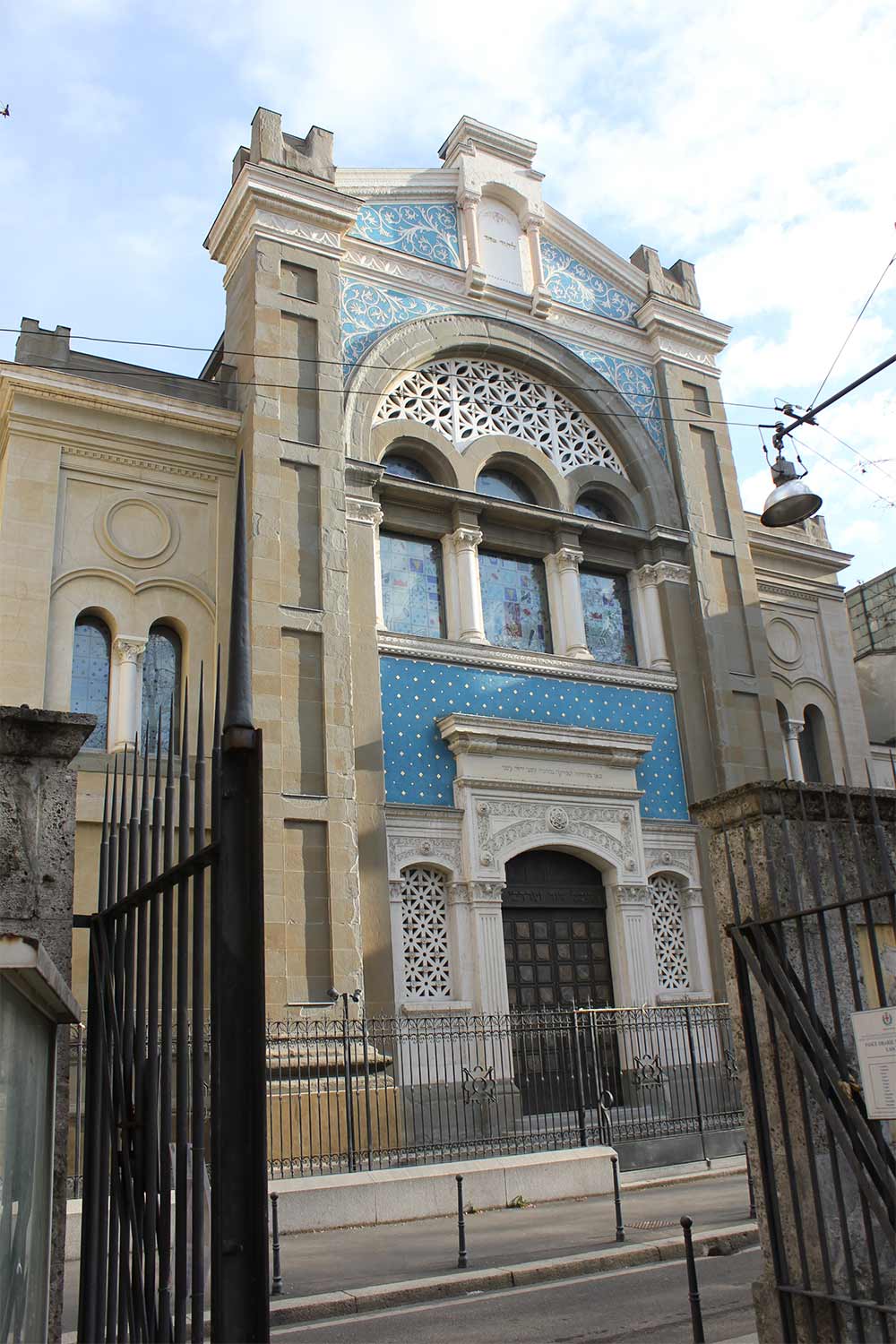
Only the facade of the 19th century synagogue of Milan remained after WWII bombings, which makes this building more or less a tangible symbol of its people.
The reconstructed synagogue still functions as such and is located opposite the eastern end of the Giardini della Guastalla.
Worth seeing inside are the modern stained glass windows that were produced in Murano, Venice, as designed by the artist Roger Selden, who has his studio in Milan at Corso Como 9. Next to the synagogue, there is a memorial stone with the names of deported jews.
Via della Guastalla 19, 20122 Milan
 Home
Home Practical info
Practical info Sights not to miss
Sights not to miss Bars & Aperitivo
Bars & Aperitivo Churches & Abbeys
Churches & Abbeys Day trips
Day trips Family Fun
Family Fun Fashion & Shopping
Fashion & Shopping Markets
Markets-
 Museums
Museums  Park & Gardens
Park & Gardens Restaurants
Restaurants
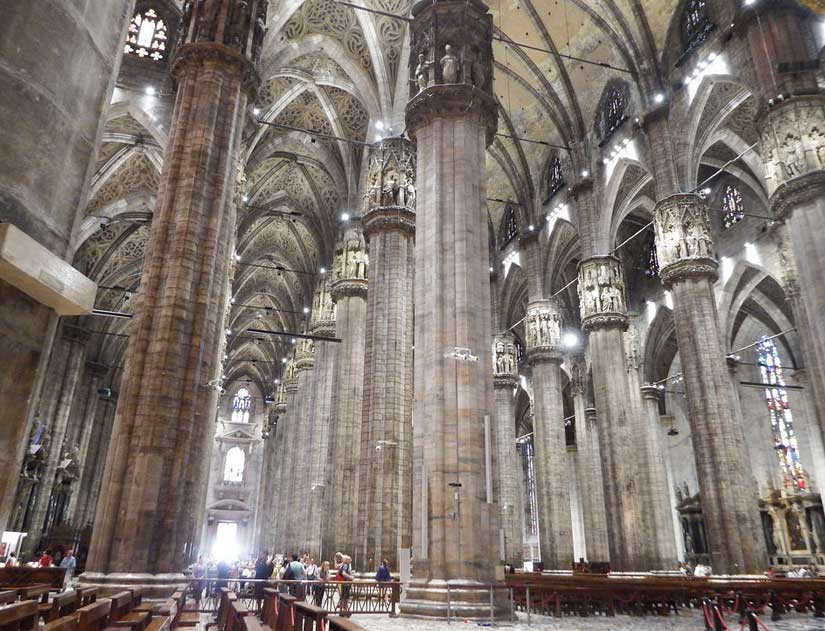
Interior of the Duomo of Milan
New
Living in Italy: the Real Deal
Ever thought of moving to Italy and enjoying the 'Good Life'? Read this book about two Dutchmen who have moved to Italy together with their dog, and the story of their new Bed & Breakfast.
The hilarious & horrendous adventures of two Dutch expats and their dog in Italy
About mafiose real estate agents, Mussolini-type builders, lousy plumbers, Italian neighbours, murderous veterinarians, horrors in hospitals, tasting wine, eating pizza, visiting the theatre, truffle hunting and much more!
Winner Reader Views Literary Fiction Award & 2017 Eric Hoffer Award Finalist
Buy at Amazon (paperback/ebook) and other retailers
